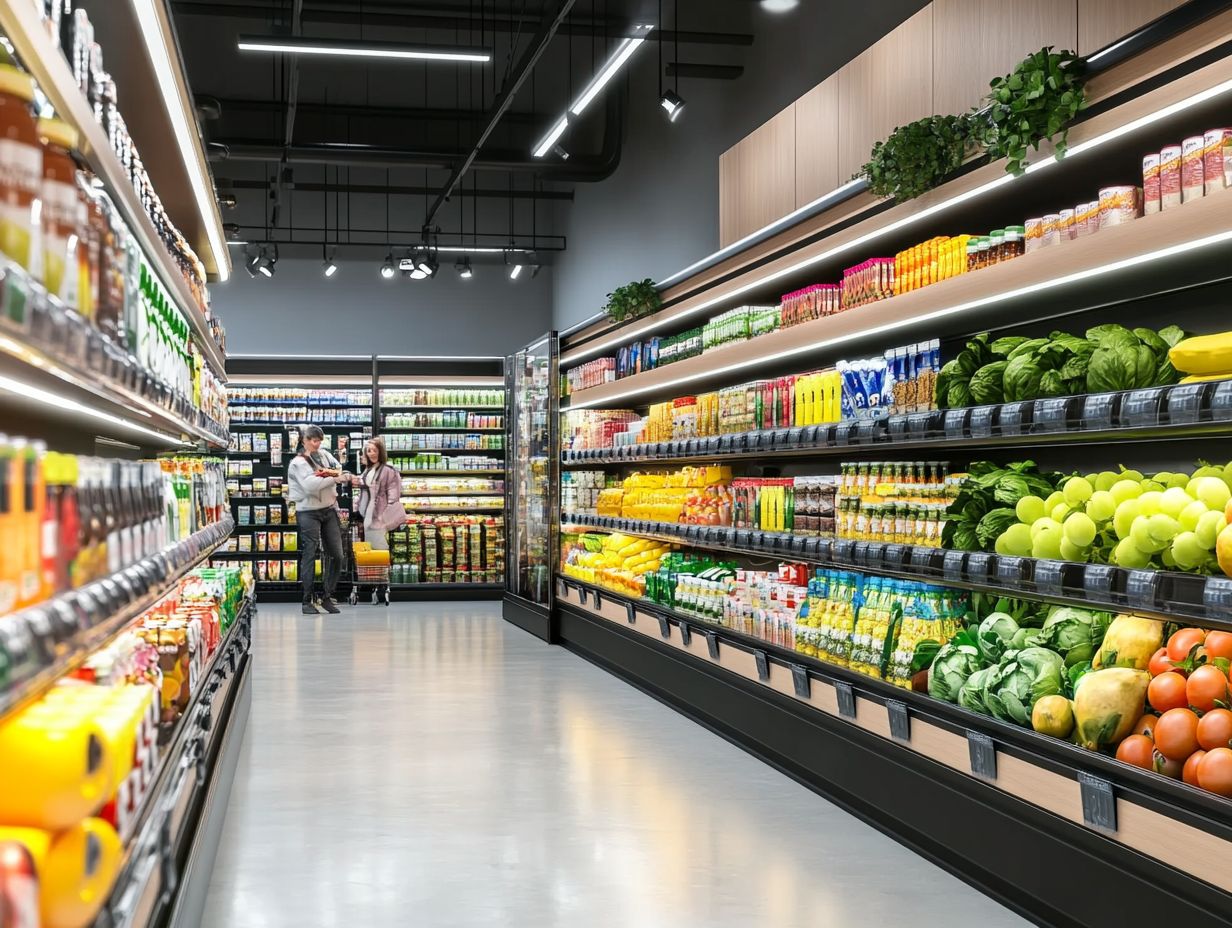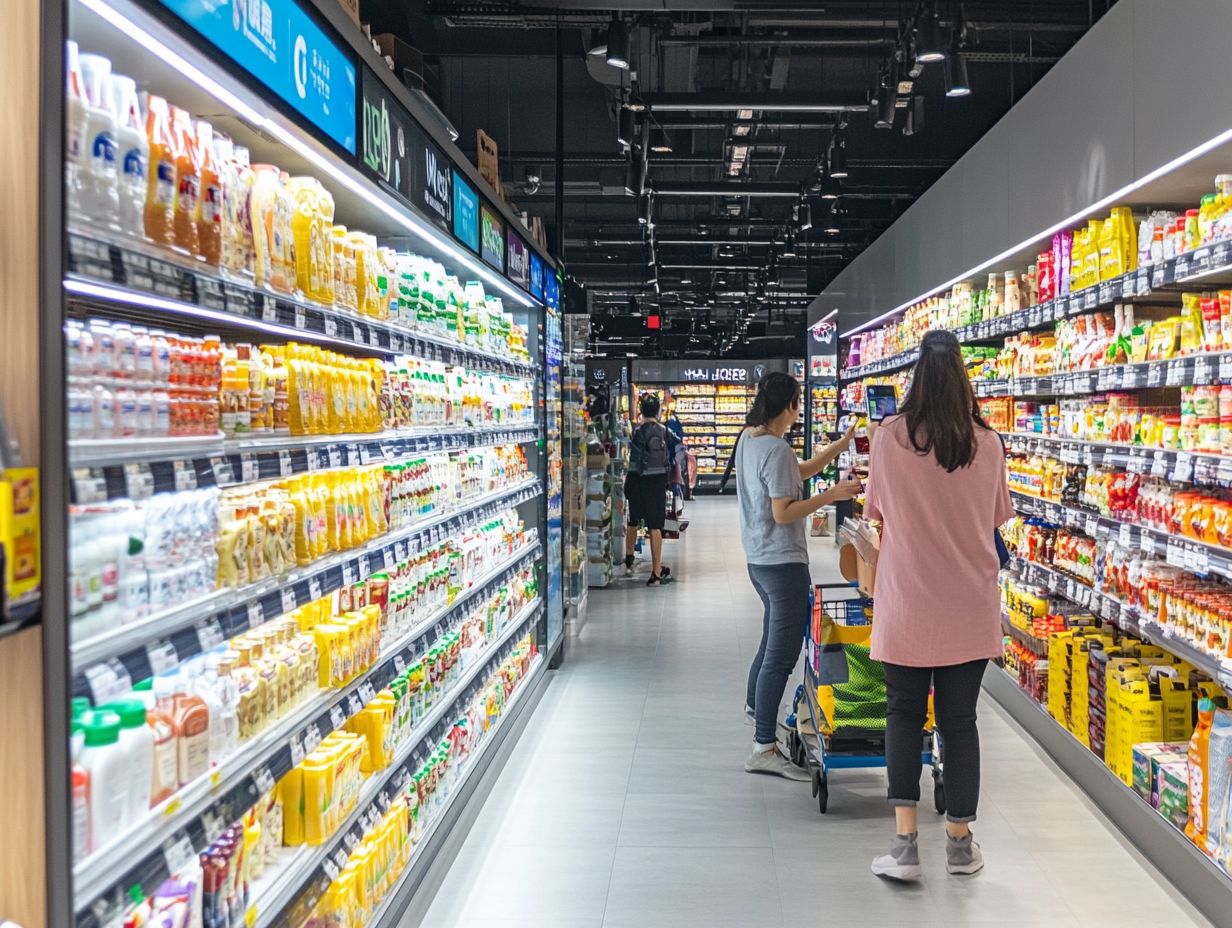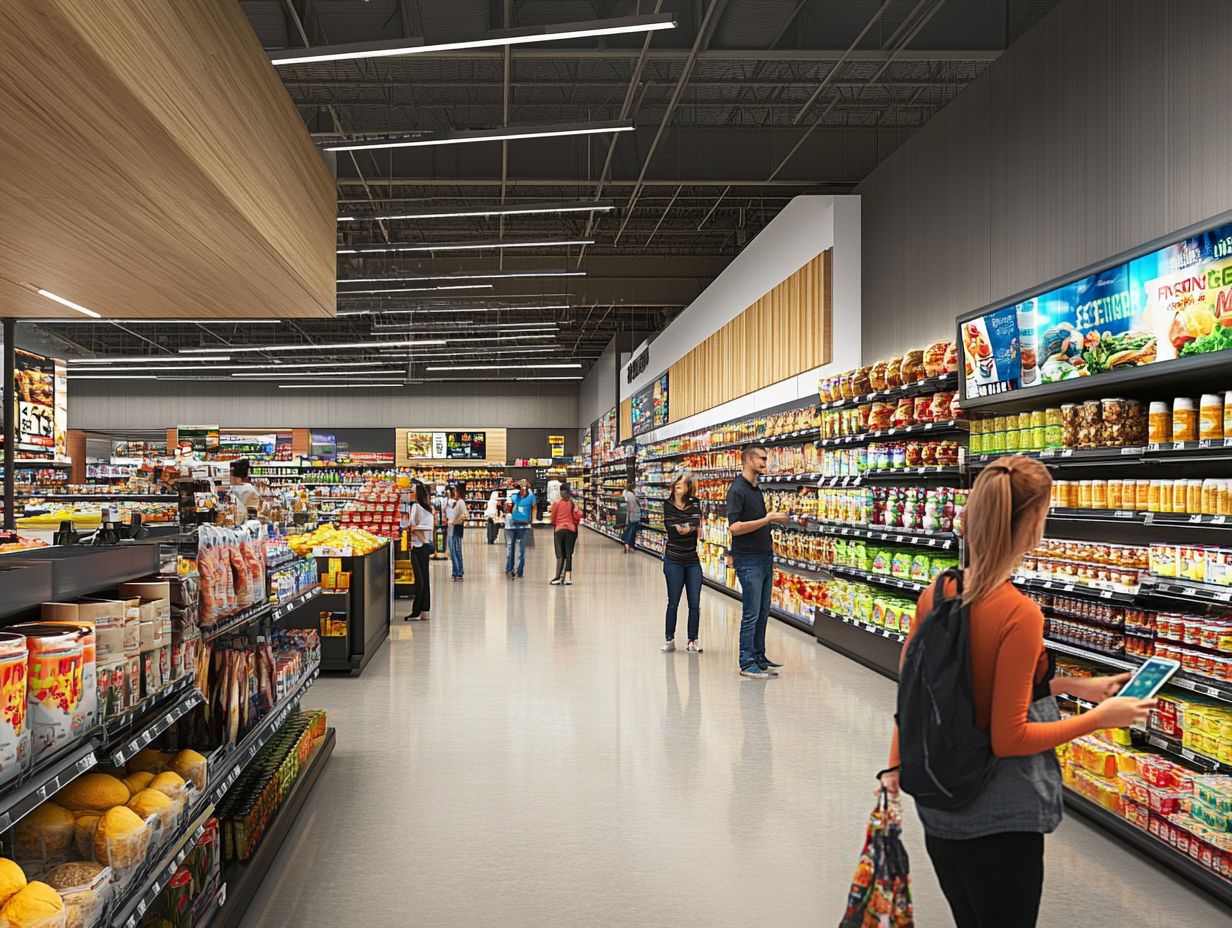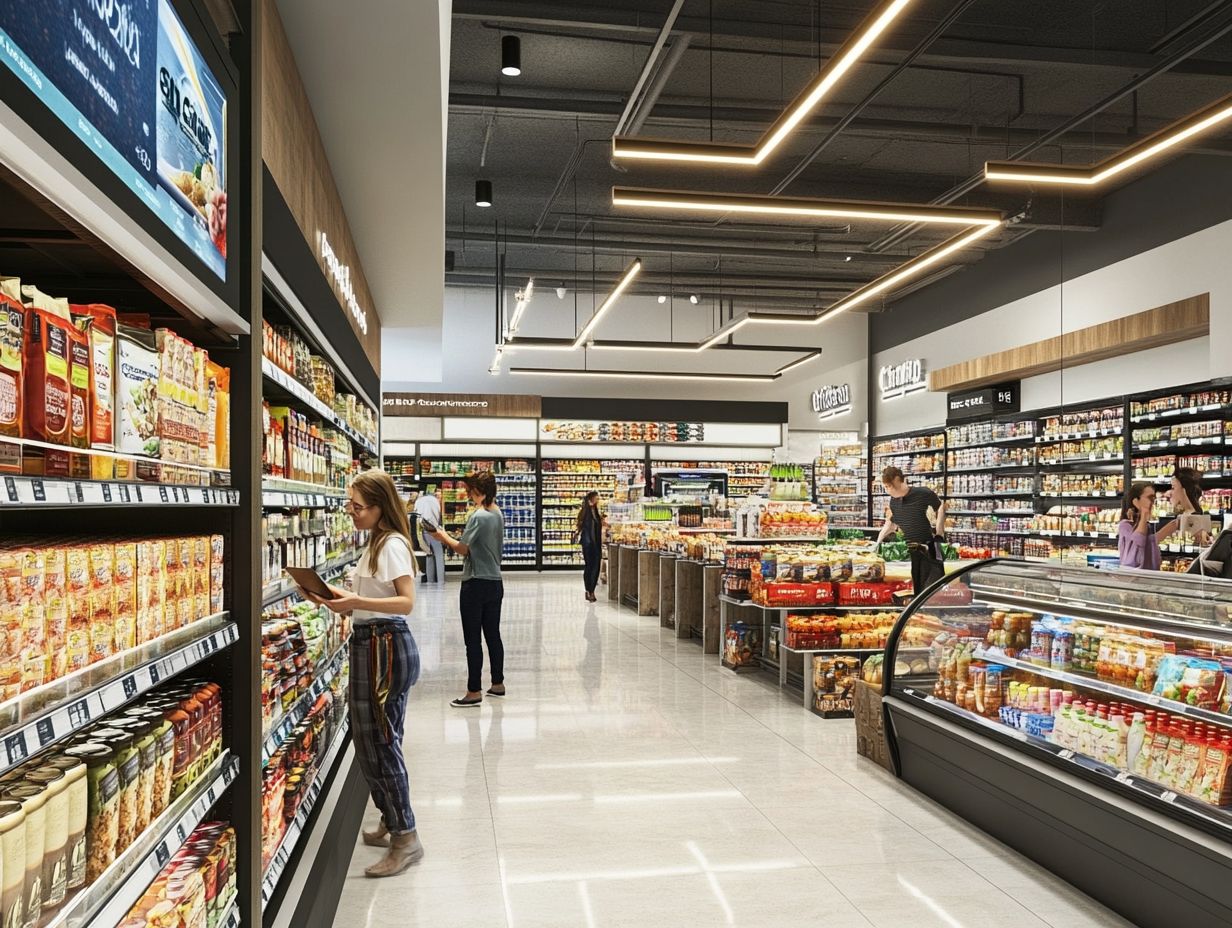Location data presents grocery stores with valuable opportunities to cultivate customer loyalty and improve customer engagement in today’s competitive retail landscape. By offering insights into consumer habits and preferences, location data plays a crucial role in shaping marketing strategies. This article will define location data, explore the various methods for collecting it, and highlight its essential role in fostering customer loyalty. Additionally, it will discuss best practices for utilizing location data, such as implementing targeted promotions and enhancing the in-store experience, while also addressing challenges related to privacy and data integration.
Understanding Location Data and its Importance in Grocery Stores

Location data plays a vital role in enhancing the customer experience and providing personalized marketing strategies that boost brand loyalty.
Location data is crucial for grocery stores as it provides insights into customer shopping behavior by tracking and analyzing consumer movements, preferences, and buying patterns through technologies such as mobile tracking and geofencing.
By utilizing data analytics, retailers can enhance customer loyalty and develop personalized promotional marketing strategies that increase consumer engagement.
This optimization of promotions and improvement of customer experiences ultimately lead to higher sales conversion rates and greater brand loyalty.
What is Location Data and How is it Collected?
Location data is a cornerstone of predictive analytics, enabling grocery stores to anticipate shopping trends and optimize inventory management.
Location data refers to information about a consumer’s geographical whereabouts, which is collected through GPS tracking, mobile applications, Wi-Fi signals, and augmented reality technologies. This information is aggregated to enhance the understanding of user demographics and shopping habits, enabling businesses to serve their customers more effectively.
Advanced technologies such as beacons, RFID tags, and geofencing enable businesses to monitor their customers’ real-time movements and interactions. The significance of location data is evident in its ability to help businesses target specific advertising campaigns, as well as in analyzing foot traffic in physical stores.
However, the collection and use of location data raise important data privacy and security concerns, especially as people become increasingly aware of surveillance practices and data sharing. While understanding consumer behavior through location tracking is vital for businesses, they must carefully consider the ethical implications alongside the benefits to foster trust with their customers.
The Role of Location Data in Improving Customer Loyalty

Effective use of location data supports loyalty programs by offering personalized offers and rewards that resonate with customer preferences.
Location data enhances customer loyalty and retention strategies by enabling grocery stores to offer promotions and loyalty programs tailored to individual customers and their preferences, leading to better sales performance.
By analyzing foot traffic and shopping habits, retailers can create a more personalized experience that fosters loyalty to their brand.
For instance, a grocery store chain might utilize geolocation analytics to identify when loyal customers are near one of their locations and send them mobile notifications with discounts, personalized offers, or digital coupons for products they have previously purchased.
Similarly, a coffee shop could leverage location data to provide coupons or rewards to customers who visit the store a certain number of times each week. These initiatives can significantly boost customer loyalty and satisfaction, as they make shoppers feel recognized and valued.
Furthermore, using location information alongside customer purchase histories ensures that promotions, discounts, and loyalty programs are delivered in the most convenient manner, which is essential for cultivating long-lasting customer loyalty.
Ways to Utilize Location Data for Customer Loyalty in Grocery Stores
Location data is utilized by grocery stores to enhance customer loyalty through personalized marketing, targeted promotions, and improved customer engagement, including social media integration and marketing automation.
By employing geo-targeting, grocery retailers can deliver relevant offers to consumers, which helps refine shopping habits and preferences, ultimately leading to optimized sales.
Targeted Promotions and Personalized Offers

Targeting the right audience through location intelligence and demographic insights ensures effective promotional strategies.
Targeted promotions and personalized offers are among the most effective strategies grocery stores utilize to leverage location data, enhancing customer loyalty, driving brand engagement, and boosting sales.
By analyzing customer preferences and shopping patterns, retailers can tailor their marketing strategies to ensure they remain relevant and effective. Grocery chains can gain insights into the unique characteristics of different neighborhoods, allowing them to segment their customers based on demographics and buying habits.
For instance, a store located in a college neighborhood might focus promotions on snack foods and quick meals, while a store situated in a community of young families could emphasize bulk purchases and healthy items.
The use of real-time data and analytics enables retailers to respond dynamically to shifts in local demand, allowing grocery stores to adjust their promotional strategies as needed.
This level of responsiveness fosters stronger connections with customers, creating a sense of community that encourages them to return.
Improving In-store Experience with Location-based Services
Enhancing the in-store experience through personalized recommendations and user experience optimization is crucial for customer satisfaction.
Location-based services significantly enhance the in-store experience for customers by offering in-store navigation, digital coupons, and personalized recommendations tailored to their shopping journey.
These services enable consumers to navigate grocery stores efficiently while receiving relevant promotional offers based on their current location within the store.
Mobile app integrations further increase customer engagement by providing personalized recommendations, app usage insights, and alerts that notify customers of specific deals as they approach an aisle.
In-store navigation systems assist customers in locating items within the store, ultimately saving time and reducing frustration, particularly in larger grocery stores.
Additionally, strategically deployed digital coupons that align with shopping habits can encourage customers to try new products or purchase larger quantities.
Enhancing Customer Service and Engagement with Location Data

Customer service is enhanced through behavior tracking and customer profiling, allowing for better user experience delivery.
Utilizing location data can significantly enhance customer service, customer-centric strategies, and engagement for grocery stores by enabling them to respond to customer needs and preferences in real-time through location insights and feedback.
This data helps grocery stores identify peak shopping times, allowing for improved inventory management to ensure that popular items are available during busy periods.
Geolocation tools can track shopper visits and sales patterns, which can be cross-referenced with customer feedback collected through mobile apps or in-store kiosks specific to the shopper’s area, enhancing customer journey analysis. For instance, if a grocery store chain receives local feedback indicating a demand for more organic produce options at a neighborhood location, they may choose to expand those offerings accordingly.
Implementing community engagement initiatives based on localized data allows grocery stores to build strong relationships with customers, who will feel valued and appreciated.
For example, a grocery store chain might run targeted promotions in a neighborhood when a local sports team is in the playoffs or during popular local events.
By leveraging location data to enhance customer service, grocery stores can increase customer satisfaction, ultimately leading to more foot traffic and higher sales.
Challenges and Considerations in Using Location Data for Customer Loyalty
Effective integration of location data requires careful consideration of existing systems and market segmentation.
Using location data to enhance customer loyalty in grocery stores presents several challenges and considerations, particularly regarding privacy concerns and data security issues.
Retailers must exercise caution in how they collect and utilize this data to maintain customer trust.
Privacy Concerns and Data Security
Privacy concerns and data security are critical when utilizing location data, as consumers are becoming increasingly aware of how their information is collected and used. Retailers must prioritize data privacy, retention strategies, and security to maintain customer trust and comply with regulations.
This heightened awareness requires a proactive approach to safeguard sensitive information. Implementing effective data governance practices, such as anonymizing location data and using robust encryption protocols, can significantly reduce the risks associated with potential breaches.
Transparent communication about data usage enables customers and enables them to make informed decisions. By following best practices like obtaining explicit consent, regularly auditing data access, and ensuring minimal data retention, businesses can harness location insights to personalize experiences while fostering customer loyalty.
Ultimately, addressing these privacy concerns not only enhances security but also strengthens the relationship between brands and their customers.
Integration with Existing Systems and Infrastructure
Integrating location data with existing systems and infrastructure is essential for grocery stores to maximize its potential in improving customer loyalty and enhancing data-driven marketing strategies. This integration involves careful planning and execution to ensure seamless data flow and effective data analytics.
Grocery retailers face significant challenges, including legacy technology, data silos, and interoperability issues between various systems. To address these challenges, a phased approach is crucial, beginning with an audit of existing capabilities and a gap analysis.
Cloud-based solutions and data management platforms with robust integration capabilities can be highly beneficial. However, integrating location data alone does not provide a complete solution without incorporating data analytics.
Data analytics and data visualization offer precise insights derived from location data, transforming them into actionable strategies that enable grocery stores to personalize advertising and marketing campaigns, optimize inventory placement, and enhance the overall customer experience.
By leveraging data analytics and customer insights, grocery retailers can enhance customer loyalty and stay ahead of the competition. Utilizing personalized marketing strategies, such as location-based promotions and digital coupons, they can achieve sustainable growth and improve the customer experience.






